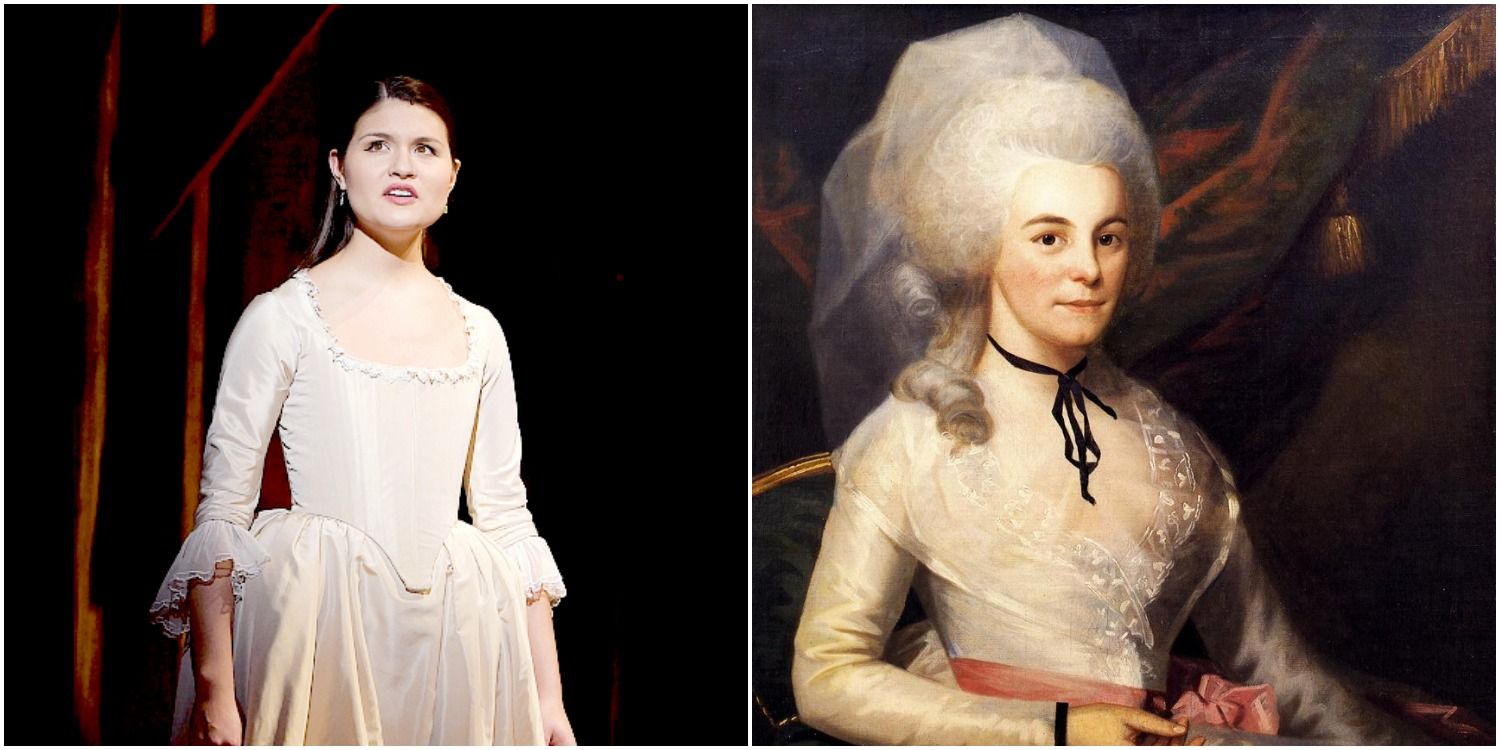

I focused on the "cutaway" feature of the jacket, where the front of the jacket is open to reveal a contrasting fabric, and the fact that the outfit uses two different colors. I had to find a way to reinterpret it for 1777. That outfit is very fashion-forward for the time the show is portraying and would be more appropriate for the early 1790s. First, I looked at the "Schuyler Sisters" trio gown, with the asymmetrical buttons, but there weren't enough period elements I could keep that would leave me with an interesting gown to make! So, I moved on to her next outfit in the show, which she is wearing during A Winter’s Ball when she meets and falls in love with Alexander Hamilton. I really did want to keep my creation as close to the original, while still being as accurate as possible to design and construction for gown making in 1777. It's so iconic to Eliza's character in the show and Tazewell's design. SM: From the start, I knew that the main element from the Musical gown that I would keep was the color scheme. MOAR: What design elements did you choose to keep from the Musical version of Eliza’s 1770s gown, and how does this reflect what she might have worn when she first met Alexander Hamilton?

The characters are allowed to be themselves, without being overpowered or obscured by period clothing. For me, the brilliance of Tazewell's designs is the balance he struck between historical accuracy and the spirit of the show. Historical costumers and reenactors might be quick to jump on these inaccuracies, but I believe that the priority of theatrical costuming is to serve the story and the character. There are some design elements that would not have been seen in the late 18th century, such as the asymmetrical buttons on one of Eliza's gown and that another gown laces up the back. Some of the outfits for the sisters in 1770s New York are stylistically ahead of their time. I really appreciate that Tazewell chose to use silk taffeta for the three sisters, as opposed to a synthetic taffeta. That choice creates a period-correct look, even though the costumes are still needed to meet the demands of theater: lots of movement on stage, quick changes backstage! The women's costumes also maintain a period-appropriate silhouette, with a smooth, conical torso slim, fitted sleeves and a full, ankle-length skirt. A portrait of three of King George III's daughters shows them wearing the same pink, blue and yellow that Tazewell chose for the Schuyler daughters. The colors that all of the Schuyler sisters wear show up in portraits and surviving garments from the 1770s.

Silk taffeta was a widely-used silk textile during this period, being fashionable but not as expensive as other weaves such as damask. SM: The blue silk taffeta fabrics chosen for Eliza's costumes are period-appropriate in both color and weave for the late 18th century. The Victoria and Albert Museum, 136-1878. Oil painting, The Three Eldest Daughters of George III: Princesses Charlotte Augusta Matilda, Augusta Sophia, and Elizabeth (after Thomas Gainsborough, dated 1784, in the Royal Collection (RCIN 400206), attributed to Gainsborough Dupont, British School, late 18th century.


 0 kommentar(er)
0 kommentar(er)
